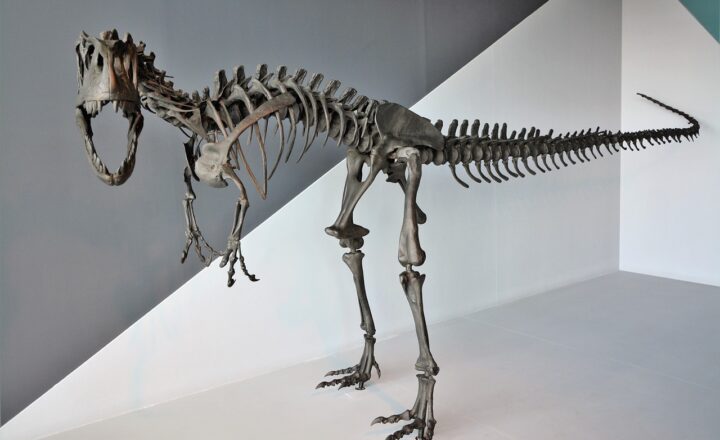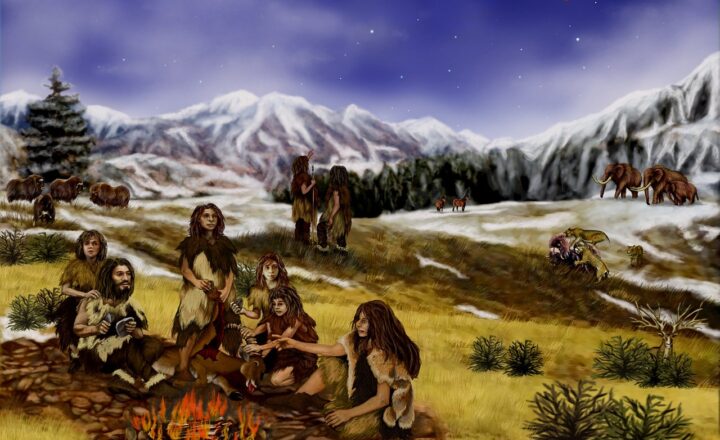Why Certain Species Evolve to Become More Complex While Others Stay Simple
November 12, 2024

Evolution is one of the most compelling aspects of biology, a natural process that unfolds over vast stretches of time. Yet, amidst the diverse tapestry of life—from the simple single-celled organisms to the intricate structures of complex mammals—lies the tantalizing question: why do certain species evolve into more complex forms while others remain relatively simple? In this article, we will explore the factors driving evolutionary complexity and simplicity, delving into the underlying mechanics that shape the biological world we observe today.
1. Understanding Evolution: Complexity vs. Simplicity
To begin, it’s essential to clarify what we mean by complexity and simplicity in an evolutionary context. Complexity in biological terms generally refers to an organism’s level of structural organization, its metabolic pathways, social behaviors, and ecological niches. For example, a human being embodies a high level of complexity with multiple organ systems, intricate behaviors, and cultural practices.
On the other hand, simpler organisms, such as bacteria or archaea, primarily consist of single cells with fewer structures and functions. While often viewed as less evolved, these organisms are anything but; they are exceptionally adapted to their environments and have survived for billions of years with minimal changes.
Thus, the juxtaposition of complexity and simplicity isn’t about a hierarchy of evolution, but rather a reflection of different evolutionary pathways and adaptations to specific ecological circumstances.
2. The Role of Environmental Pressures
One significant factor influencing the evolution of complexity is environmental pressure. Evolution operates on a simple principle: organisms that possess traits suited to their environments are more likely to survive and reproduce.
Complex organisms typically evolve in environments that require sophisticated adaptations for survival. For instance:
- Diverse Ecological Niches: In rich, varied ecosystems, such as tropical rainforests or coral reefs, organisms must adapt to numerous challenges—predation, competition for resources, and climatic changes. This creates evolutionary pressure for more complex organisms capable of developing strategies for resource acquisition and survival.
- Social Structures: Species that evolve to have social structures, such as primates or insects like bees, tend to develop higher complexity. Social living necessitates advanced communication, division of labor, and intricate behaviors.
- Habitat Stability: When habitats are stable and resources are continually available, organisms can afford to invest in complex structures, reproductive strategies, and behaviors over time, allowing them to thrive.
Conversely, in environments that are harsh, unstable, or nutrient-scarce—such as extreme deserts or polar regions—simpler life forms may have advantages. Simplicity can be synonymous with efficiency, allowing organisms to thrive on minimal resources.
3. Genetic Factors Driving Complexity
Genes play a crucial role in evolutionary complexity. As species evolve, genetic mutations lead to variations that can result in new traits.
Some key aspects include:
- Gene Duplication: This process, where a gene is copied allowing one to maintain its original function while the duplicate undergoes mutation and potentially assumes new roles, can lead to increased complexity. For example, in vertebrates, gene duplication has led to the development of elaborate immune systems.
- Regulatory Networks: Complex organisms often possess advanced regulatory networks that control when and how genes are expressed. Intricate interactions among genes contribute to the development of diverse tissues and organs in multicellular organisms.
- Epigenetics: Environmental influences on gene expression can lead to complexity. Epigenetic factors can help organisms adapt dynamically to changing conditions without altering genetic sequences directly.
These genetic mechanisms enable organisms to explore various adaptations and developmental pathways, creating layers of complexity as species evolve.
4. Ecological Interactions and Evolutionary Arms Races
The relationships between species, including predator-prey dynamics and symbiosis, frequently drive evolution in unexpected ways.
Consider the following:
- Predator-Prey Dynamics: An evolutionary arms race often ensues as predators evolve better hunting strategies while prey develop enhanced survival mechanisms. Cheetahs, for instance, are built for speed, while gazelles have evolved agility to escape predation.
- Mutualism: Some species become more complex through mutualistic relationships. For example, flowering plants and pollinators have co-evolved, leading to intricate structures and behaviors beneficial to both parties.
These interactions show how complexity can arise not just from internal genetics but from relationships with other organisms within an ecosystem.
5. Evolutionary Constraints: Why Simplicity Can Be an Asset
While complexity may offer advantages in certain scenarios, there are instances where simplicity is more favorable.
Several factors contribute to this:
- Minimization of Energy Costs: Simpler organisms often have lower energy requirements, allowing them to thrive in environments where resources are scarce. Bacteria, for instance, can reproduce quickly and efficiently in a variety of conditions.
- Rapid Reproduction: Simple organisms can often reproduce faster than more complex counterparts. This adaptability can lead to quick population growth especially in changing or unpredictable environments.
- Robustness: Simplicity can lead to robustness. Simple organisms can be less vulnerable to environmental changes due to fewer dependencies on complex interactions and structures.
Thus, the persistence of simpler life forms is a testament to their resilience and the specific evolutionary advantages they hold within their ecological niches.
6. The Bigger Picture: Evolution is Not Linear
It is crucial to emphasize that evolution is not a linear pathway that leads from simple to complex organisms. Instead, it is a branching tree of life, where different species adapt and evolve based on unique pressures and circumstances. Some branches produce complexity, while others may favor simplicity, proving that both strategies can coexist and thrive.
Evolution ultimately reflects the dynamic interplay between organisms and their environments over time, leading to the rich diversity of life on Earth.
Conclusion
In conclusion, the evolution of complexity in certain species versus the persistence of simpler forms hinges upon a myriad of factors including environmental pressures, genetic mechanisms, ecological interactions, and evolutionary constraints. Each path offers unique advantages that reflect the organism’s survival strategies.
Understanding this dynamic landscape of evolution enriches our appreciation for the diverse forms of life around us and reveals that both complexity and simplicity are equally remarkable adaptations in the grand narrative of evolution. As we continue to explore and study the living world, we will uncover even more insights into the compelling story of life and its multifaceted expressions.
Whether we admire the intricate dance of a bee pollinating a flower or the resilient life of bacteria in the most extreme environments, each organism tells a story of evolution that is both unique and essential.








